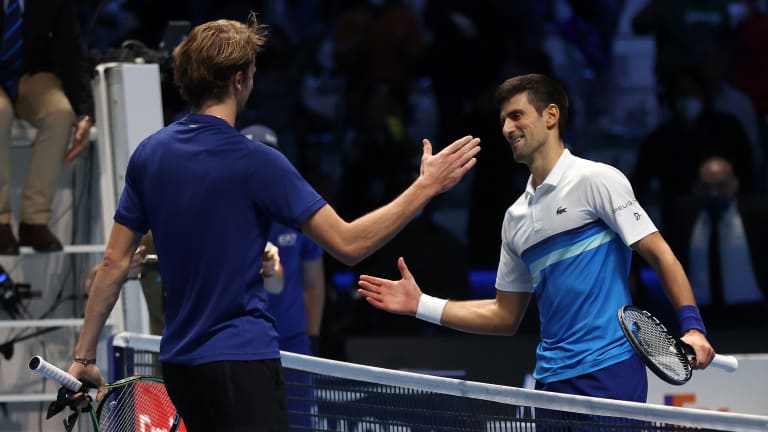ATP Finals
In one of the sport’s premier chess matches, Alexander Zverev tops Novak Djokovic to reach ATP Finals title match
By Nov 21, 2021ATP Finals
Wanted: Faster Courts
By Nov 20, 2023ATP Finals
Improving Jannik Sinner has his sights set on serving up more success next season
By Nov 20, 2023ATP Finals
New Era, Same Emperor: Novak Djokovic reigns supreme in Turin
By Nov 19, 2023ATP Finals
Record-breakovic! Novak Djokovic defeats Jannik Sinner for historic seventh ATP Finals title
By Nov 19, 2023ATP Finals
Novak Djokovic vs. Jannik Sinner: 2023 ATP Finals Championship preview
By Nov 19, 2023ATP Finals
Novak Djokovic shows Nick Kyrgios the commentator why he's the "best player to ever touch a racquet"
By Nov 18, 2023ATP Finals
Djokovic dispatches Alcaraz at ATP Finals to set up title match against home favorite Sinner
By Nov 18, 2023ATP Finals
Novak Djokovic beats Carlos Alcaraz in straight sets in battle between No. 1 and No. 2 at ATP Finals
By Nov 18, 2023ATP Finals
Jannik Sinner defeats Daniil Medvedev to reach biggest final of career at ATP Finals
By Nov 18, 2023ATP Finals
In one of the sport’s premier chess matches, Alexander Zverev tops Novak Djokovic to reach ATP Finals title match
On Saturday, Zverev more successfully balanced aggression and margin, and moved into the championship contest in Turin.
Published Nov 21, 2021
Advertising
Advertising

Alexander Zverev and Novak Djokovic played four times in 2021, and split those matches evenly.
© Getty Images